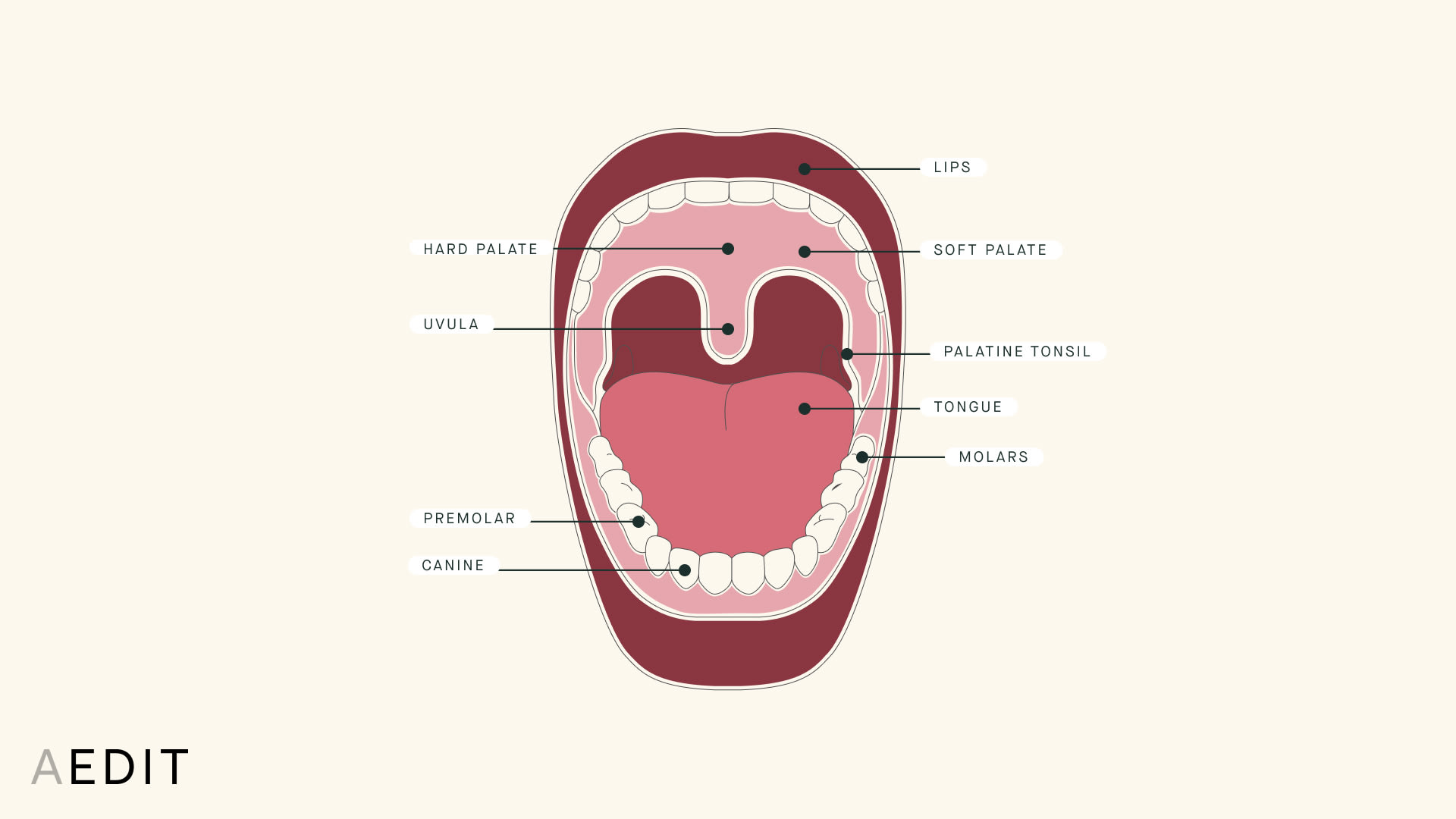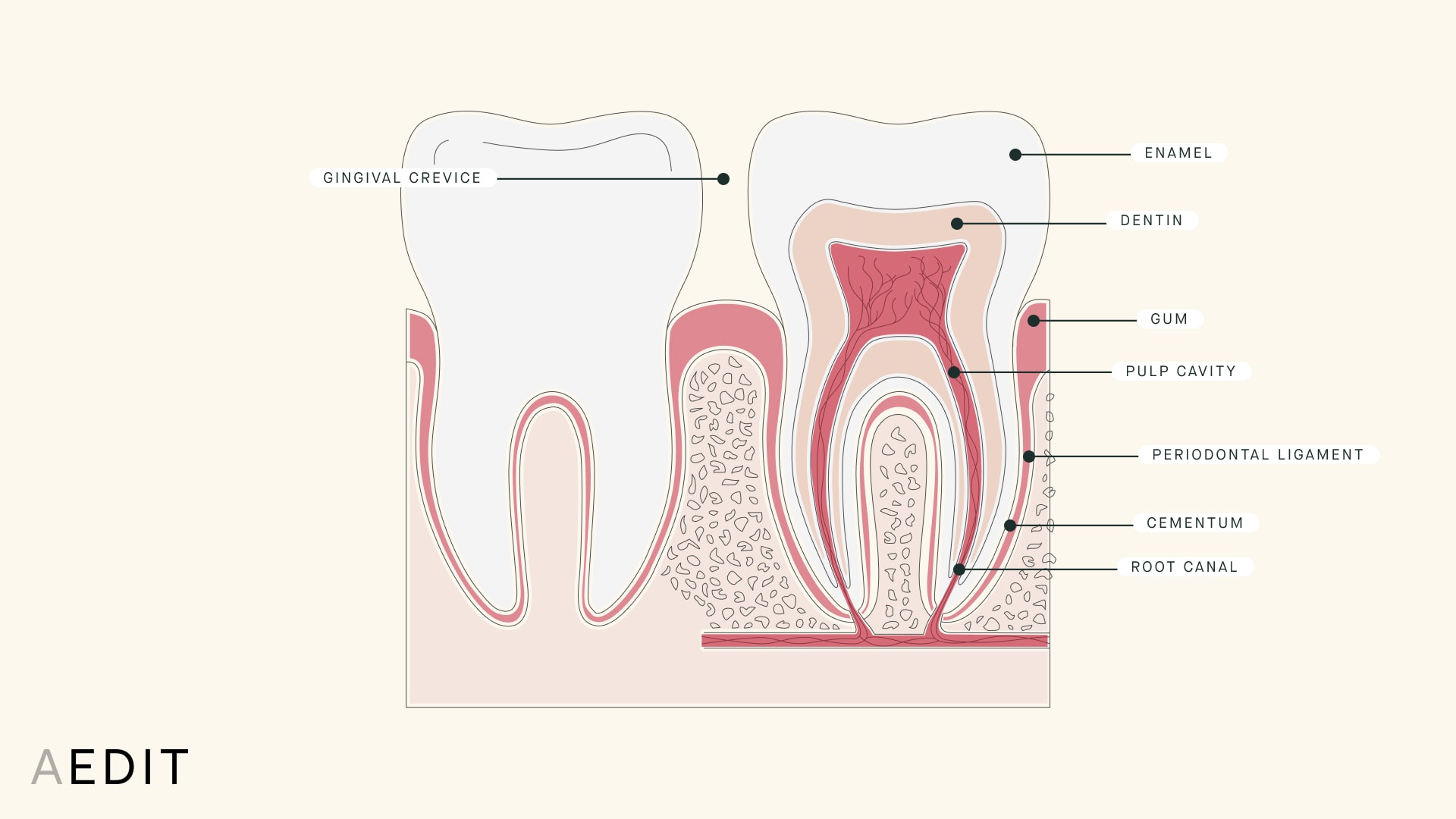
The Skinny
Average Recovery
0 days
Permanence
Permanent
Application
Temporary Wearable Device
Surgical
No
Cost
$5000 - $13000
The Specifics
What are lingual braces?
Lingual braces are placed and monitored by a board certified orthodontist to correct crooked teeth, crowded teeth, poorly oriented teeth, and unevenly spaced teeth.
The Anatomy of the Oral Cavity

While traditional braces stainless steel metal brackets are unsightly, lingual braces are placed on the backs of teeth for a more discreet appearance. Lingual braces are effective, minimally noticeable, and have high patient compliance unlike other types of removable braces such as clear aligners like Invisalign.
What cosmetic concerns do lingual braces treat?
Misaligned Teeth & Bite: Lingual braces utilize progressive adjustments to wires, hooks, and rubber bands located on the rear of the teeth to move teeth into the desired appearance with ideal orientation and spacing.
Who is the ideal candidate for lingual braces?
The ideal candidate for lingual braces has good oral health and is looking to improve dental imperfections such as open bite, crossbite, overbite, overjet, gummy smile, overcrowding, and poor spacing. Lingual Braces are not recommended for those with a deep overbite, severe cases of gum recession, or those with areas of bone loss in the jaw bone.
The Anatomy of the Tooth

What is the average recovery associated with lingual braces?
There is no recovery time associated with the use of lingual braces. Patients may experience temporary mild pain and changes in teeth sensation following the application of the braces, and with adjustments, however, these side effects are temporary and easily relieved with wax and over the counter medications.
What are the potential side effects of lingual braces?
Possible side effects of lingual braces use include jaw pain, tooth pain, irritation of the mouth, and headache. Lingual braces may also interfere with tongue thrust and movement causing a lisp.
What can someone expect from the results of lingual braces?
The results of lingual braces will be slowly developed over months to years depending on the patient. After the final results are achieved and the braces are removed, patients will need to consistently wear a retainer to limit tooth movement after the lingual braces treatment is completed.
What is the average cost of lingual braces?
Lingual braces can cost anywhere from $5,000 to $13,000. The actual cost of lingual braces is dependent upon location, healthcare provider, and length and involvement of the cosmetic procedure.
Pros
- Do Not Break
- Less Visible
- High Patient Compliance
Cons
- More Expensive
- Not Invisible
- Lisp
- Food Restrictions
Invasiveness Score
Invasiveness is graded based on factors such as anesthesia practices, incisions, and recovery notes common to this procedure.
What to Expect
Lingual braces are placed on the back sides of the teeth next to the tongue. Here is a quick guide for what to expect before, during, and after lingual braces.
The Takeaway
Lingual braces are a less noticeable, but still effective and straightforward teeth alignment and straightening option for those who desire a beautiful smile and straight teeth without the unsightly look of traditional metal braces.







